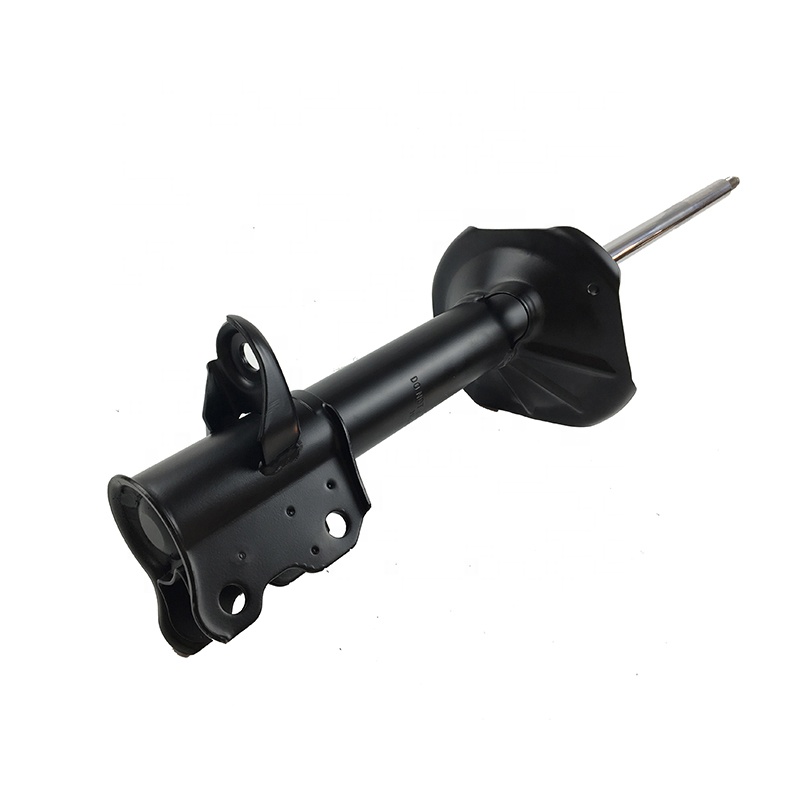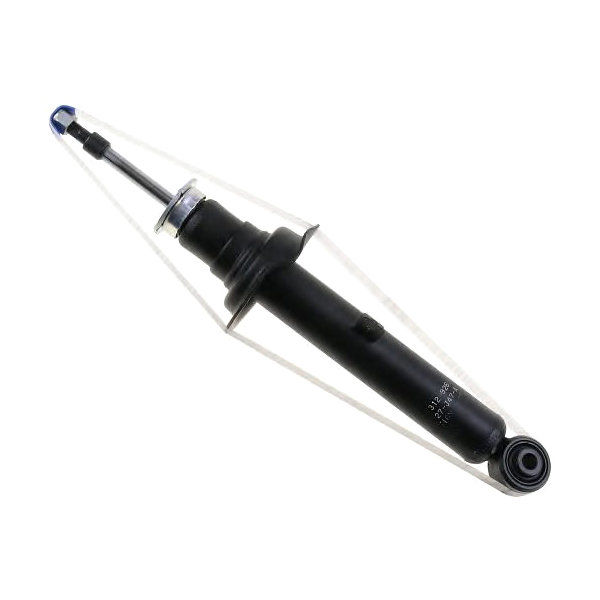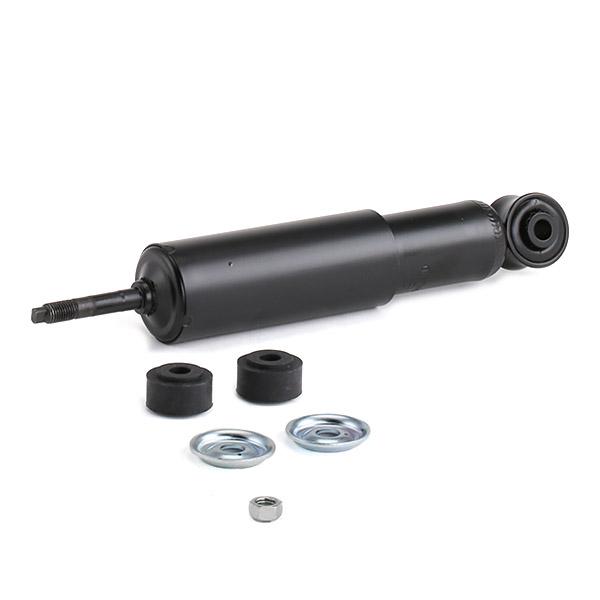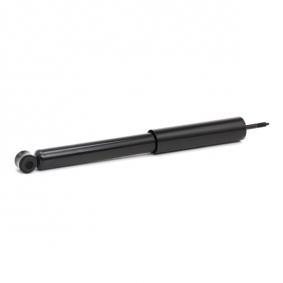Maximize Your Payload, Minimize Your Problems: The Essential Guide to Heavy-Duty Truck Shocks
 2025.07.22
2025.07.22
 Industry News
Industry News
I. Introduction
A. Hook: The unsung heroes of heavy-duty trucking.
In the demanding world of heavy-duty trucking, where vehicles endure immense loads, grueling distances, and varied terrains, many components work tirelessly to ensure safety and efficiency. Among these, the shock absorbers often go unnoticed, yet they are the unsung heroes, playing a pivotal role in the vehicle's overall performance, stability, and the comfort of its operator.
B. What are heavy-duty truck shock absorbers?
Heavy-duty truck shock absorbers are critical components of a vehicle's suspension system, designed to dampen the oscillations of springs and absorb the kinetic energy generated by road imperfections. Unlike springs, which support the vehicle's weight, shock absorbers control the movement of the suspension, preventing excessive bouncing and swaying.
C. Why are they crucial for heavy-duty vehicles (safety, performance, longevity)?
For heavy-duty trucks, the importance of robust and effective shock absorbers cannot be overstated. They are crucial for:
- Safety: Maintaining consistent tire-to-road contact, reducing braking distances, and preventing loss of control.
- Performance: Ensuring vehicle stability, improving steering response, and enhancing overall handling, especially under heavy loads.
- Longevity: Protecting other suspension components, tires, and the chassis from premature wear and tear, thereby extending the vehicle's lifespan and reducing maintenance costs.
D. Brief overview of what the article will cover.
This article will delve into the science behind shock absorbers, explore the different types available for heavy-duty trucks, highlight their key functions and benefits, guide you through factors to consider when choosing them, provide essential maintenance tips, and touch upon future trends in shock absorber technology.

II. The Science Behind Shock Absorbers
A. Basic principles of shock absorption (damping, energy conversion).
At its core, a shock absorber works on the principle of damping. When a vehicle encounters a bump or dip, the springs compress and rebound. Without shock absorbers, this motion would continue, causing the vehicle to bounce uncontrollably. Shock absorbers convert the kinetic energy of this motion into thermal energy (heat) through the resistance of fluid (oil or gas) flowing through small orifices within the shock's cylinder. This conversion effectively "damps" the oscillations, bringing the vehicle back to a stable state.
B. How they differ from springs (controlling oscillations vs. supporting weight).
It's a common misconception that springs and shock absorbers perform the same function. Springs are primarily responsible for supporting the vehicle's weight and absorbing the initial impact of road irregularities. Shock absorbers, on the other hand, control the rate and extent of spring compression and rebound, preventing continuous bouncing and ensuring a smooth, controlled ride.
C. Importance of damping in heavy-duty applications.
In heavy-duty applications, the sheer weight of the vehicle and its cargo means that the forces generated by road impacts are significantly higher. Effective damping is paramount to:
- Preventing excessive suspension travel that could lead to bottoming out.
- Maintaining consistent tire contact with the road, which is vital for braking and steering.
- Minimizing stress on the chassis and other structural components.
- Ensuring the safety and integrity of the cargo being transported.
III. Types of Heavy-Duty Truck Shock Absorbers
A. Hydraulic Shock Absorbers (Twin-Tube)
1. Description and working principle.
Also known as twin-tube shocks, these are the most common and traditional type. They consist of two concentric tubes: an inner working tube and an outer reserve tube. As the piston moves up and down within the inner tube, oil is forced through small valves and orifices, creating resistance and generating damping force. Excess oil flows into the outer reserve tube.
2. Pros and Cons (cost-effective, heat dissipation).
| Category | Description |
|---|---|
| Pros | Generally more cost-effective, simpler design, and widely available. |
| Cons | Can be more susceptible to "fade" (reduced damping effectiveness) during prolonged heavy use due to heat buildup, as the oil can aerate. |
B. Gas-Charged Shock Absorbers (Monotube)
1. Description and working principle (nitrogen gas).
Monotube shocks feature a single cylinder filled with oil and a charge of high-pressure nitrogen gas, separated by a floating piston. The gas pressure helps prevent aeration (foaming) of the oil, which is a common issue in hydraulic shocks, especially under demanding conditions. This design allows for a larger piston area, leading to more consistent damping.
2. Pros and Cons (better heat dissipation, consistent performance, cost).
| Category | Description |
|---|---|
| Pros | Superior heat dissipation, more consistent damping performance, better response to rapid suspension movements, and less prone to fade. |
| Cons | Generally more expensive than twin-tube shocks, and their rigid design can sometimes transmit more road harshness. |
C. Adjustable/Load-Sensing Shock Absorbers

1. Electronically controlled systems.
These advanced systems utilize sensors to monitor various parameters such as vehicle speed, load, road conditions, and driver input. An electronic control unit (ECU) then adjusts the damping characteristics of the shocks in real-time by altering valve openings or fluid viscosity.
2. Benefits for varying loads and road conditions.
- Benefits: Provide optimal ride comfort and handling across a wide range of operating conditions and loads, adapting instantly to changes. This leads to improved stability, reduced wear, and enhanced driver comfort.
D. Specialty/Application-Specific Shock Absorbers (e.g., cab shocks, trailer shocks).
Beyond the main suspension, heavy-duty trucks often employ specialized shock absorbers for specific applications:
- Cab Shocks: Designed to isolate the truck's cab from road vibrations, significantly improving driver comfort and reducing fatigue.
- Trailer Shocks: Used on trailers to enhance stability, reduce cargo damage, and improve overall towing dynamics.
- Steering Stabilizers: While not traditional shock absorbers, they are similar in function, designed to dampen steering wheel vibrations and improve control, especially in off-road or rough conditions.
IV. Key Functions and Benefits
A. Enhancing Vehicle Stability and Control
1. Reducing body roll and sway.
By effectively controlling spring oscillations, shock absorbers minimize the side-to-side motion (body roll) and front-to-back motion (sway) of the truck, especially during turns or when encountering crosswinds.
2. Improving steering response.
A stable suspension system, supported by good shocks, ensures that the tires maintain consistent contact with the road, leading to more precise and predictable steering.
B. Improving Ride Comfort for Drivers
1. Absorbing road imperfections.
Shocks absorb the energy from bumps, potholes, and uneven surfaces, preventing harsh jolts from reaching the cab, thereby providing a smoother ride.
2. Reducing fatigue.
A comfortable ride translates directly to reduced driver fatigue, which is crucial for long-haul operations, enhancing alertness and safety.
C. Protecting Vehicle Components
1. Extending the life of tires, suspension components, and chassis.
By controlling excessive movement, shocks reduce stress and impact forces on tires, springs, bushings, ball joints, and the entire chassis, significantly extending their operational life.
2. Minimizing wear and tear on cargo.
A smoother ride also protects sensitive or fragile cargo from damage due to excessive vibrations and impacts during transit.
D. Ensuring Safety
1. Maintaining tire-to-road contact.
This is perhaps the most critical safety function. When a wheel bounces excessively, it loses contact with the road, compromising braking, acceleration, and steering control. Shocks ensure continuous contact.
2. Reducing braking distances.
With optimal tire contact, the braking system can work more effectively, leading to shorter and safer stopping distances.
3. Preventing "porpoising" and uncontrolled bouncing.
Shocks prevent the dangerous up-and-down motion (porpoising) that can occur on uneven roads, maintaining vehicle stability and driver control.
V. Factors to Consider When Choosing Shock Absorbers
| Factor | Consideration |
|---|---|
| Vehicle Make and Model (OEM vs. Aftermarket) | Ensure compatibility with your specific truck's make, model, and year. Consider OEM for exact fit or aftermarket for upgrades/cost savings. |
| Intended Application (long-haul, off-road, vocational) | Choose shocks based on the truck's primary use: comfort and longevity for long-haul, durability for off-road/vocational. |
| Load Capacity and Distribution | Select shocks rated for your typical load weight and distribution to prevent premature failure. |
| Driving Conditions (potholes, rough terrain, highway) | For rough roads, prioritize robust shocks with superior damping and heat dissipation. For highways, comfort may be a focus. |
| Material and Construction Quality | Look for high-quality materials, durable seals, heavy-duty piston rods, and corrosion-resistant finishes. |
| Brand Reputation and Warranty | Choose reputable brands for quality control and good warranty coverage. |
| Cost vs. Performance | Invest in higher-quality shocks for long-term savings through reduced maintenance and improved efficiency. |
VI. Maintenance and Troubleshooting
A. Signs of Worn-Out Shock Absorbers
Recognizing the signs of worn shocks is crucial for timely replacement:
- Excessive bouncing or swaying: The most obvious sign; the truck continues to bounce after hitting a bump.
- Fluid leaks: Visible oil leaks on the shock body indicate a failed seal.
- Cupping tire wear: Uneven wear patterns on tires (scalloping or cupping) can be a symptom of a bouncing wheel.
- Nose-diving during braking: The front of the truck dips excessively when braking.
- Harsh ride: The truck feels unusually stiff or transmits every road imperfection directly to the cab.
B. Regular Inspection and Service Intervals.
Regular visual inspections are key. Check for leaks, dents, bent rods, and worn mounts. Consult your truck's service manual for recommended inspection and replacement intervals, typically every 50,000 to 100,000 miles, but this can vary based on operating conditions.
C. When to Replace Shock Absorbers.
Replace shocks when any of the signs of wear become apparent, or as part of routine preventative maintenance. Replacing shocks in pairs (e.g., both front or both rear) is highly recommended to maintain balanced damping.
D. Importance of Professional Installation.
While some maintenance can be DIY, shock absorber replacement often requires specialized tools and expertise. Professional installation ensures proper fitment, torque settings, and alignment, which are critical for safety and performance.
VII. Future Trends and Innovations
- A. Smart/Adaptive Suspension Systems.
The trend towards electronically controlled adaptive suspension systems will continue, offering real-time adjustments for optimal performance across all conditions, integrating more deeply with vehicle telematics. - B. Regenerative Shock Absorbers (energy harvesting).
Emerging technology aims to convert the kinetic energy absorbed by shocks into usable electrical energy, potentially improving fuel efficiency and powering auxiliary systems. - C. Advanced Materials and Manufacturing.
Expect to see more lightweight, yet stronger, materials and advanced manufacturing techniques (e.g., additive manufacturing) leading to more durable and efficient shock absorber designs. - D. Integration with Vehicle Telematics and Predictive Maintenance.
Future shock absorbers may feature integrated sensors that communicate directly with the truck's telematics system, allowing for predictive maintenance alerts and real-time performance monitoring, minimizing unexpected downtime.
VIII. Conclusion
A. Recap of the critical role of heavy-duty truck shock absorbers.
Heavy-duty truck shock absorbers are far more than simple dampeners; they are indispensable components that underpin the safety, efficiency, and longevity of these workhorses of the road. From enhancing stability to protecting valuable cargo and ensuring driver comfort, their role is multifaceted and critical.
B. Emphasize the long-term benefits of quality shocks.
Investing in high-quality, appropriate shock absorbers is not merely an expense but a strategic investment that yields significant returns in terms of reduced operational costs, extended vehicle life, and improved safety records.
C. Call to Action: Encourage regular inspection and informed choices for optimal performance and safety.
To ensure optimal performance and safety, heavy-duty truck operators and fleet managers are urged to prioritize regular inspection of their shock absorbers and make informed choices when it comes to replacement, considering the specific demands of their operations. A well-maintained suspension system, anchored by robust shock absorbers, is key to a smooth, safe, and productive journey.
 EN
EN  English
English Español
Español








 +86-13757453333
+86-13757453333  +86-572-8355557
+86-572-8355557  Caroline@gerep.cn
Caroline@gerep.cn  No. 36, South Zhenxing Rd., Zhongguan Town, Deqing County, Huzhou, Zhejiang, China
No. 36, South Zhenxing Rd., Zhongguan Town, Deqing County, Huzhou, Zhejiang, China 